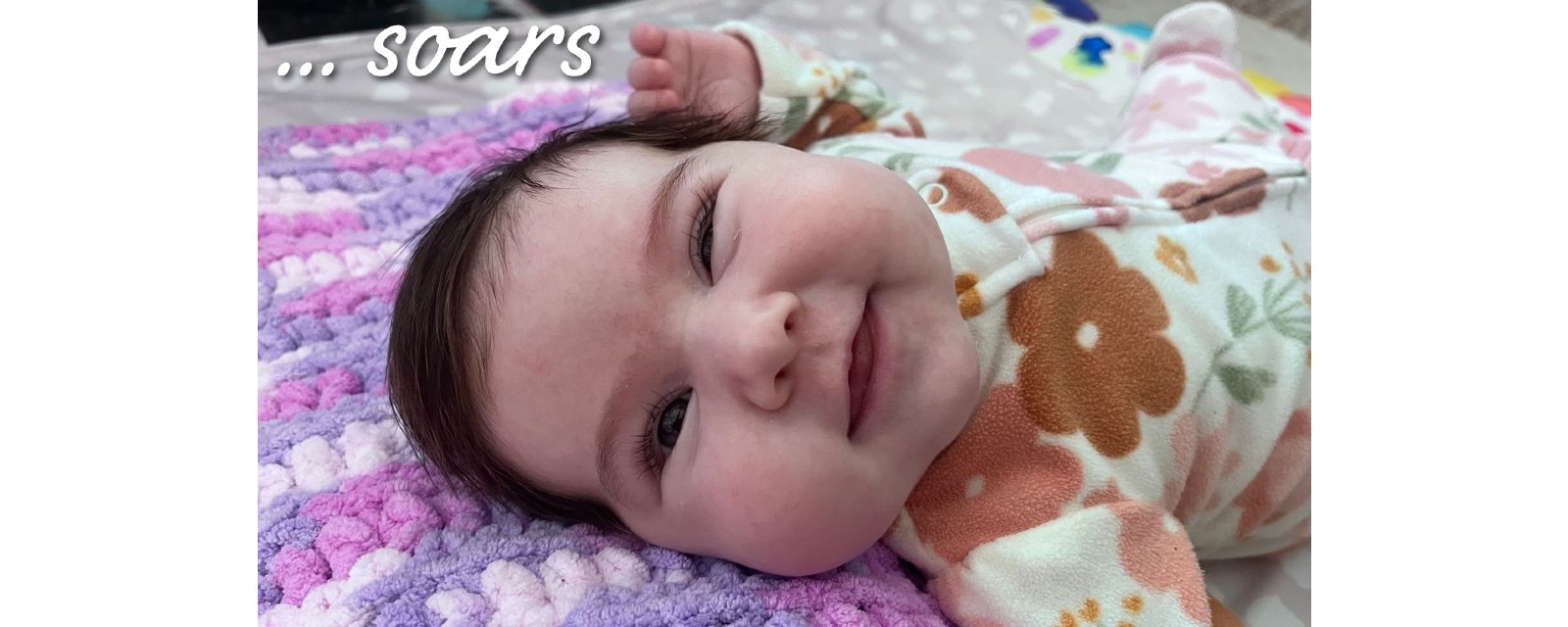
When Gina Young gave birth to her daughter Willow, everything seemed perfect. After a smooth pregnancy and delivery, Willow came into the world healthy, crying and nursing well. Gina and her husband, Jarret, already had a thriving 2-year-old son named Maverick, and they brought Willow home just two days after her birth.
Everything felt normal, until it didn’t.
That first night, Willow seemed unusually sleepy. She wasn’t eating, wasn’t having wet diapers and was quieter than expected. Gina and Jarrett thought maybe they were just lucky enough to have a great sleeper. But by morning, alarm bells were going off in their heads.
They already had a pediatrician appointment scheduled. Willow’s vitals were good, but she still wasn’t responding normally. The nurse practitioner urged them to head back to the hospital. They returned to where Willow was born, but the team struggled to insert an IV. At first, she was dehydrated and became unresponsive. Then she began to seize.
The team inserted a breathing tube to get oxygen into Willow’s lungs and placed the newborn into a medically induced coma, but it was clear she needed a higher level of care.
That’s when Norton Children’s became involved.
The Norton Children’s Hospital “Just for Kids” Transport Team rushed to the scene in Sellersburg, Indiana, with specialized medications and critical care equipment. That same night, Willow was admitted to the hospital’s neonatal intensive care unit (NICU).
A team of specialists – neurologists, pulmonologists, geneticists, neonatologists, nephrologists and others – worked to determine what was causing Willow to be so ill. The team ran tests and scans for brain bleeds, infections and genetic and metabolic disorders.
At first, everything was a mystery, and Willow’s condition became critical again. Her heart rate dropped into the 30s, far below normal for a newborn. Oxygen levels plummeted.
Then a breakthrough: The team discovered Willow’s ammonia levels were dangerously high.
She was rushed into emergency dialysis to flush the ammonia from her system.
A rare diagnosis and an urgent fight
From the moment Willow started dialysis, she began improving. Doctors confirmed Willow had citrullinemia, a rare urea cycle disorder that prevents the body from properly eliminating ammonia. Without quick diagnosis and treatment, citrullinemia in infants can be fatal.
Gina and Jarret were completely unaware that they are carriers of the genetic condition. Their first child had never had so much as a fever, so the diagnosis came as a complete shock.
“There was nothing during pregnancy, nothing in the tests, nothing that gave us a clue,” Gina said. “But now we know even genetic testing might not have caught this unless you specifically screen for it.”
As Willow stabilized, MRI scans showed she experienced brain damage due to the seizures and swelling. But slowly, Willow kept getting better. A repeat MRI a month later showed improvement.
After 40 days in the NICU, Willow was able to go home. But her journey was far from over.
The next step: A liver transplant
Doctors explained that, in some cases, children with citrullinemia may be eligible for a liver transplant, an option that could greatly improve quality of life and reduce the risk of dangerous spikes in ammonia levels in her body.
At first, Gina and Jarret were hesitant. A transplant felt like a big, scary step. But after a hospital admission during her transplant evaluation and two additional hospitalizations at Norton Children’s, they knew it was the right decision.
Willow was placed on the transplant list. And after a series of tests, Jarret was approved as her living donor. She underwent a successful transplant July 8, 2025.
A life saved and a life to be lived
Despite her rocky start to life, Willow is a happy baby with a big smile and an even bigger spirit. She continues to receive care that is helping her reach milestones every day. While the future holds unknowns, her progress so far has amazed her care team.
“Not only did Norton Children’s save her life, but they gave her a chance at a full life,” Jarret said,”
“The staff were more than medical providers – they were our lifeline,” Gina said. “They guided us through an unimaginable journey with compassion, precision, and hope. We will never forget what they did for our daughter, and we’re forever grateful for the gift of time, possibility and future they’ve given Willow.”
